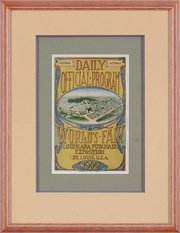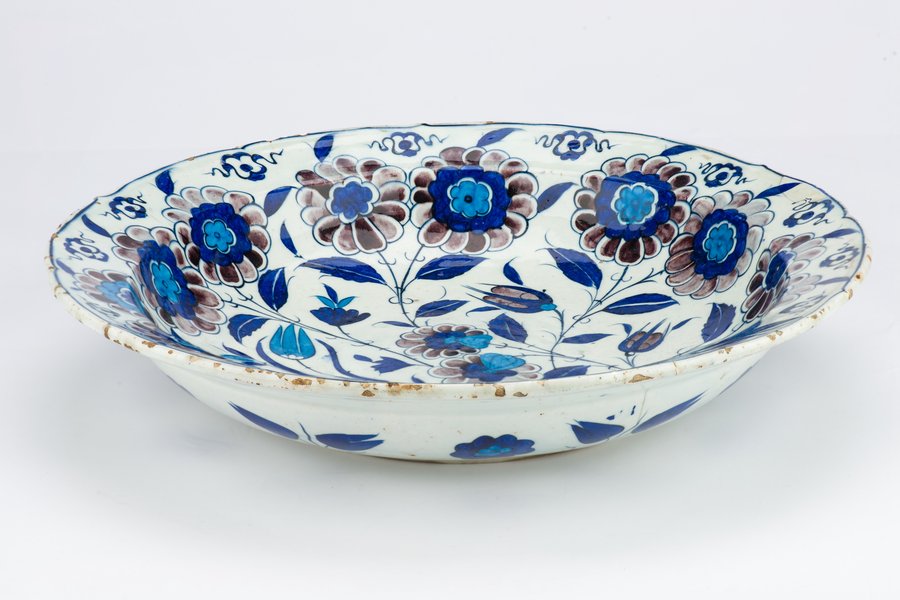
Dish
Museum of Islamic Art
- Title:
- Dish
- Production place:
- Iznik
- Date:
- 1525 - 1575
- Period:
- Ottoman
- Title:
- Dish
- Production place:
- Iznik
- Date:
- 1525 - 1575
- Period:
- Ottoman
- Material:
- Fritware, Pigment, Glaze
- Technique:
- Underglaze painting, Glazing
- Dimensions:
- 8.0 cm
- Diameter:
- 38.0 cm
Iznik pottery is named after the town of Iznik, in western Anatolia (modern day Turkey), where it was initially made. The earliest evidence of Iznik production occurred during the reign of Ottoman Sultan Mehmed II (r. 854-886 AH/1451-81 CE), whose appreciation for fine blue and white Chinese Ming porcelains inspired him to start making similar ceramics. As such, early Iznik pottery was blue and white, and largely influenced by Chinese motifs. This circular dish with a deep cavetto, probably produced in the 10th century AH/mid-16th century CE, shows the beginning of the expansion of Iznik production that happened during the reign of Sultan Suleiman the Magnificent (r. 926-974 AH/1520-1566 CE), when new forms, colours and patterns were introduced. It shifts away from the previous patterns and compositions, and instead introduces a new cool palette of pastel colours, including lavender. This dish is decorated with the Quatre Fleurs motif (French for four flowers), which depicts four different kinds of flowers, including lilies, rosettes and tulips or chrysanthemums. The rim of the dish is painted with blue cloud-band motifs. A dish of this size and quality, with its delicate shades and crisply executed lines, would have most certainly been displayed in a wealthy Ottoman household.



